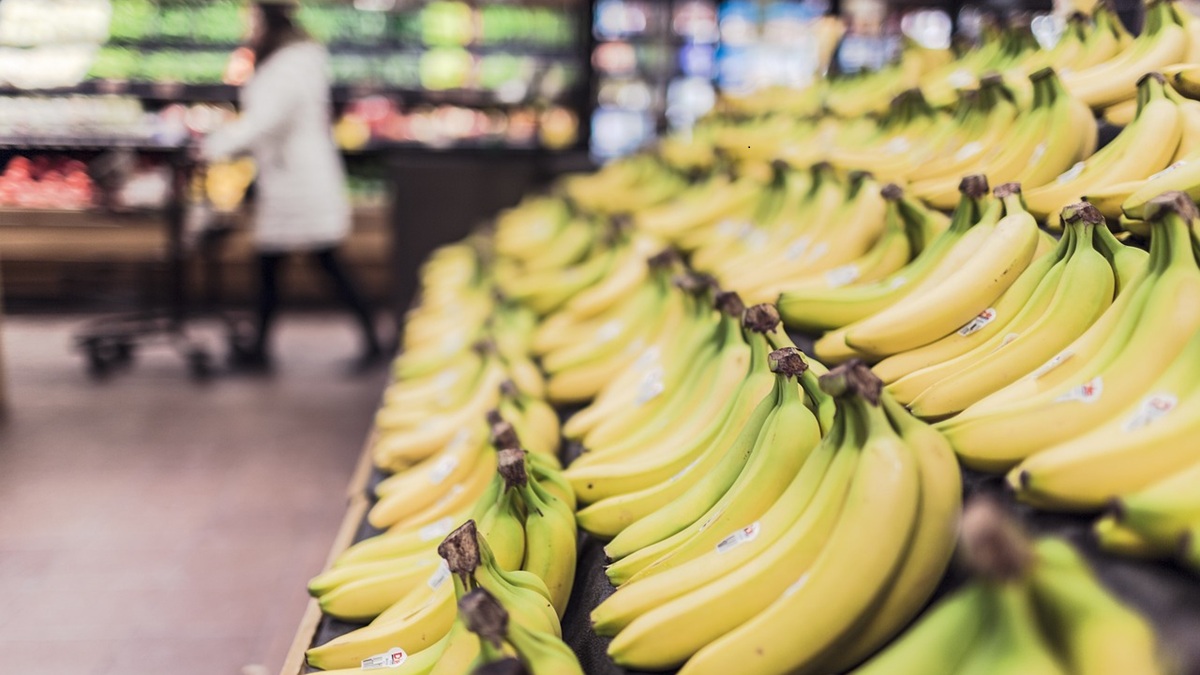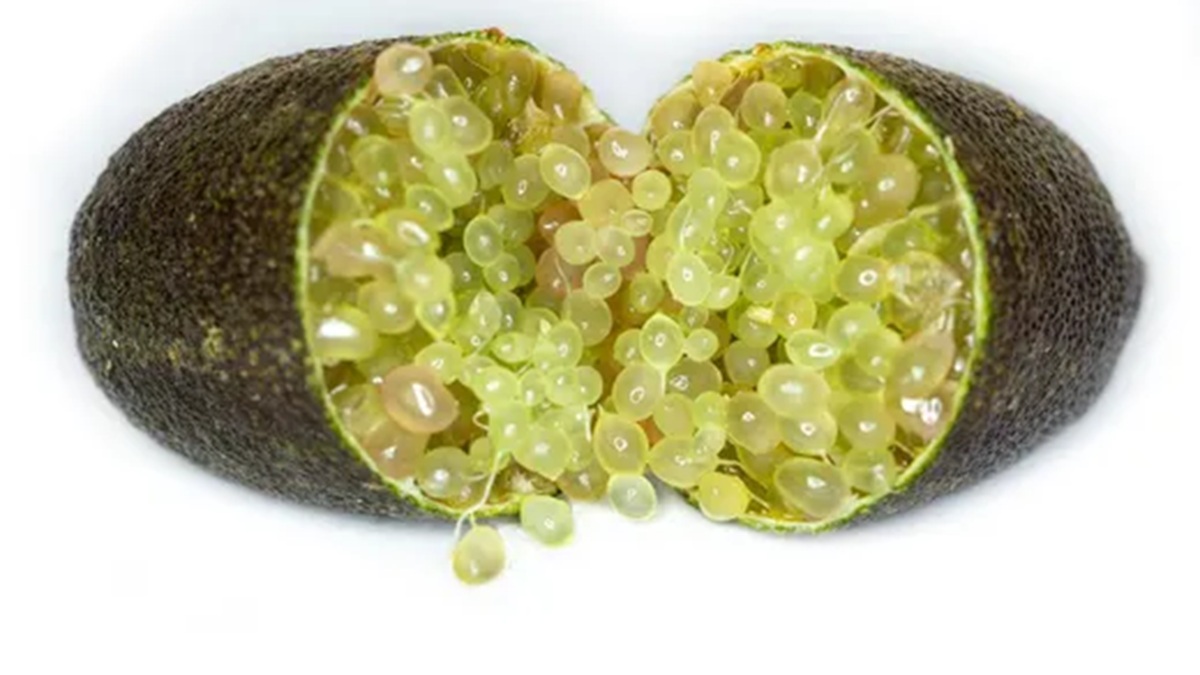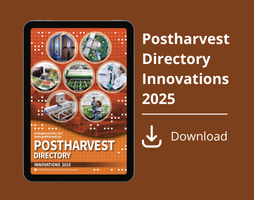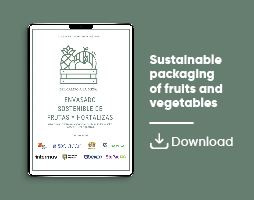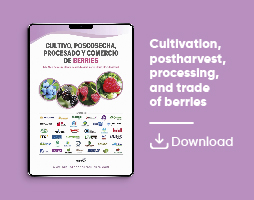News
The Invisible Shield: How the Fruit’s Cuticular Wax is Key to its Postharvest Life
Melatonin Reinforces the Cuticle: A Biochemical Strategy for Enhancing Grape Postharvest Quality
Prolonging the shelf life of fruit is not just a matter of logistics, but of a deep understanding of its biology. In this context, the cuticular wax emerges as the true hero, a complex natural barrier that determines the quality and resistance of the fruit from the tree to the consumer.
This "invisible shield" is the coating that covers the outermost layer of the fruit’s epidermal cells, acting as an essential natural barrier against biological and non-biological stress. It is a hydrophobic and water-insoluble substance, a complex lipid shield whose function extends far beyond appearance, playing a fundamental role in the storage of fresh produce.
Composition and Structure: The Chemistry of the Protective Shiel
Cuticular wax is not a homogeneous layer, but a complex mixture of lipids that confers its functionality. Its chemical composition is varied and specific to each species and cultivar:
Key Chemical Composition
-
Very Long-Chain Fatty Acids (VLCFAs) and Derivatives. These are the main components, including Alkanes, Alcohols, Ketones, Esters, and Aldehydes.
-
Triterpenoids. Cyclic compounds that often predominate in specific fruit varieties, such as derivatives of ursolic and oleanolic acid.
-
Other Components: Sterols and phenols.
Morphology and Physical Structure
Cuticular wax is formed by the intracuticular wax and the epicuticular wax (organizado into crystalline structures such as plaquetas or rods). The shape of these crystals directly influences the barrier’s effectiveness.
Vital Functions for Postharvest Quality
The primary "use" or function of cuticular wax is to preserve the quality of the fruit after harvest.
-
Water and Nutrient Retention. It is the main barrier that prevents water loss and nutrient leaching, crucial for reducing the phenomenon of wilting.
-
Pathogen Resistance. Wax is the first line of defense for resisting microorganism attacks.
-
Quality Regulation. Changes in the wax directly affect fruit softening and disease resistance.
The Impact of Storage and the Biochemical Strategy
Cuticular wax is sensitive to storage conditions. Low temperature, for example, can lead to the melted morphology of the crystals, compromising their function.
Melatonin: A Treatment to Reinforce the Shield
Recent research on 'Red Globe' grapes revealed that treatment with exogenous Melatonin (MT) is an effective biochemical strategy for protecting wax and quality.
-
"Anti-Melting" Effect and Maintenance. MT treatment was shown to protect the integrity of wax crystals, preventing the fusion observed in control grapes during storage. Furthermore, melatonin actively delayed the decrease in total wax (up to 26% more at 56 days) and even stimulated the transcription of key genes for its biosynthesis.
-
Double Shield Against Softening. MT slows down fruit softening and reduces firmness loss. It achieves this by suppressing the activity and gene expression of cell wall hydrolytic enzymes, such as Polygalacturonase (PG) and Pectin Methyl Esterase (PME). By preserving both the wax and the cell wall, MT offers a "double shield" that guarantees a longer shelf life.
Effect of MT (Melatonin) treatment on 'Red Globe' grape berries: Melatonin application resulted in a 26% higher total cuticular wax concentration at 56 days, actively preserving major components like triterpenoids and fatty acids, thus enhancing fruit durability.
MT (Melatonin) treatment significantly delayed the decline in the 'Red Globe' grape berry's cuticular wax during storage, preserving its integrity and composition.
-
Total Wax Concentration. MT treatment slowed the sharp decrease, resulting in 26% higher total wax concentration compared to the control group at 56 days.
-
Major Components Increased. The concentrations of crucial structural molecules were significantly elevated, with total Triterpenoids registering 24% higher and Total Alcohols surging 37% higher by the 56-day mark compared to the control. Furthermore, Total Hydrocarbons, the primary water-repellent agents, were substantially bolstered, showing a 28% increase, enhancing the fruit’s defense against moisture loss. Most notably, the fundamental building blocks of the wax pathway—the very foundation of the fruit's defense—were dramatically preserved, with Total Fatty Acids a remarkable 62% higher and Total Aldehydes jumping 60% higher at the close of storage.
-
Minor Components Decreased: MT treatment reduced the content of esters and other minor substances.
Overall, MT helped maintain the amount and composition of the protective wax layer, which is essential for grape berry preservation.
Additional Quality Benefits
-
Better Nutritional Composition. MT-treated fruits retain higher levels of Total Soluble Solids (TSS) and Organic Acids.
-
Phenolic Boost. MT promotes the accumulation of phenolic compounds, including anthocyanins (color) and resveratrol, thus increasing the product's nutraceutical value.
Understanding the dynamics of cuticular wax and how to enhance its protection offers new insights and strategies for fruit preservation.
The cuticular wax is confirmed as the fruit's essential "invisible shield," fundamentally determining quality, pathogen resistance, and shelf life from the vine to the consumer.
References
G. Zeng, Y. An, M. Zeng, L. Zhang, G. Wu, Q. Zeng, Z. Zhang, B. Yang. (2025). Melatonin improves the postharvest quality of grape (Vitis vinifera L.) by modulating cuticular wax, cell wall, and phenolic metabolism. LWT, 233, 118557.
Wu, G., Yang, B., An, Y., Zeng, M., Zhang, L., Zeng, Q., Zhang, Z., & Zeng, G. (2023). Structures and Functions of Cuticular Wax in Postharvest Fruit and Its Regulation: A Comprehensive Review with Future Perspectives. Foods, 12(14), 2639.
Image
https://doi.org/10.1016/j.lwt.2025.118557 Acceso 22/10/2025



